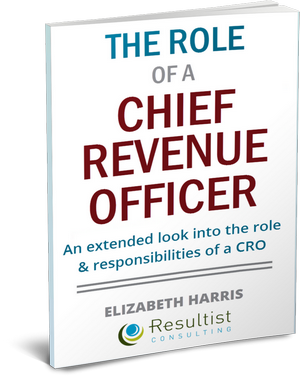
Account development is the smartest path an organization can take to increase profitability. This approach utilizes existing clients as assets to generate revenue, rather than requiring marketing teams to generate more leads or sales teams to convert more leads. The result is a viable roadmap for long-term growth rather than a short-term surge.
However, like any other business endeavor, internal and external barriers can stymie the success of any account development plan. Recognizing these obstacles upfront gives an organization a chance to sidestep their effects before they can impede effective implementation and execution.
While individual organizations may vary in their strategic account development processes, all organizations must follow these four main steps to build profitable client relationships:
Equip Sales Teams for Success
Developing existing accounts hinges on properly structuring, training, and incentivizing sales teams to achieve desired business goals.
- Identify Strategic Accounts
Prioritizing accounts provides a basis for identifying top clients and assigning them to your most experienced sales staff. Key accounts should be handled by your most skilled employees regardless of seniority. Many organizations choose to designate a Strategic Account Manager (SAM) to handle flagship accounts and provide white glove treatment.
- Balance Account Loads
Sales professionals cannot do their best work if they are stretched too thin, which is why maintaining a manageable account load is so critical. Hiring additional employees is typically a better long-term move than overtaxing existing employees with numerous accounts.
- Train Employees
Training comprises a large portion of the hiring cost for sales staff, but it is a vital investment to ensure that they are equipped to maximize revenue for the organization. Formal training related to product/service features and benefits should be supplemented with peer training on the most effective approaches for reaching your target audience.
- Set Incentives
Incentives should be desirable enough that sales teams and individuals are motivated to strive for them, but they must also be achievable. Setting incentives that are too far out of reach for employees can demotivate them, resulting in poor company morale and high employee turnover.
Utilize Strategic Sales Actions
Properly structured and incentivized sales organizations have the framework in place to take strategic actions to generate more revenue. Successful sales professionals should be encouraged to:
- Build Personal Relationships
People buy from people, not companies. Personal relationships strengthen account development more effectively than any other element, which is why salespeople are so adept at building rapport. Equipping sales staff with the resources and tools needed to sell themselves to clients will result in selling the product/service to clients as well.
- Maintain the Relationship
Research from Bain and Company reveals that a 5% increase in customer retention produces a 25% increase in profit, which is why it is so vital to hold onto these existing relationships. To mitigate losing key connections, establish multiple points of contact within client companies. The more ties you have on the inside, the less likely your organization is to get shut out when key personnel get reassigned or leave.
- Solve Problems
Akin to having a personal relationship, clients have a deep psychological desire to feel heard and understood. In fact, perceiving that a company does not care about or sympathize with their problems is the top reason clients go elsewhere.
Being able to relate and respond to clients’ pain points is the most effective sales strategy across all industries because it also addresses their motivations in looking for a product/service.
Additionally, prioritizing clients’ needs is a shrewd way to ensure future success with subsequent product/service versions.
- Understand Goals
While it may be enough to solve clients’ problems, truly understanding their short-term objectives and long-term goals aids in illustrating how your offerings can get them there. Partnering on this transformative journey is a reliable way to solidify the relationship between your products/services and their success.
- Communicate Regularly
Meeting periodically in-person or over video chat, having occasional phone calls, and regularly emailing are essential tools for maintaining the contact that fuels positive client relationships. Sales staff should be committed to communicating with clients often enough to keep the relationship current. Regular communication makes pitching additional products/services friendly and casual, instead of obtrusive or offensive.
- Utilize Software to Manage Accounts
CRM software allows sales teams to organize, manage, and maintain client information to provide a streamlined experience that feels personal and authentic. Without a formal software solution to keep track of client records, preferences, and communications, customer information can be lost when sales staff leaves or transfers account responsibilities. The result is a poor brand experience that can hinder ongoing client relationships.
Deliver on Sales Promises
Even the best sales organizations with the most tools and resources cannot fill the gap that providing a disappointing product/service creates. Delivering on sales promises is critical for building profitable client relationships.
- Provide Superior Offerings
It is easy to claim to be the best, and much harder to definitively be the best. However, providing a super product/service is the best way to set your organization apart from the competition and deliver on the promises that your marketing and sales functions make to clients.
Ensure that any claims being made by sales teams are accurate and correct any misleading information or misrepresentations of your offerings. Train sales staff to walk the fine line between bravado and passionate confidence in product/service quality.
- Respond to Changing Industry Demands
Offerings should evolve to meet the business needs of the industry. Continuously striving to improve products/services to solve the changing demands of your audience is vital for maintaining market position and brand relevance.
- Encourage Corporate Ownership
A sales team that lacks organizational backing will not have the support network needed to fuel its success. It is crucial that the entire organization is focused on supporting sales teams in their day-to-day operations.
- Demonstrate Executive Buy-In
Ownership starts at the top. Executive buy-in should be more than a rubberstamp on existing efforts. Buy-in must include regular communication about sales needs and goals, with a two-way conversation aimed at maximizing collaboration to achieve satisfaction at all levels of the organization. The needs of owners, executives, board members, employees, and clients should be aligned to produce the best results for all parties.
- Acquire Influencer Accounts
Acquiring new clients is every team’s responsibility, especially when these accounts are key influencers within the industry. Regardless of job function or level, identifying top influencers and working cross-functionally to win their business is a critical function.
- Track KPIs
Sales KPIs should be agreed on and tracked by upper management to keep sales functions on course. Without a sense of how the organization will measure results and what will be considered success, sales and management can end up with vastly different views on whether sales actions are generating positive ROI and justifying their investment.
- Anticipate Risk
Large organizations are prone to silo-ing, which makes it difficult for individual teams to anticipate and mitigate industry-wide risk independently. Putting risk analysis under the guidance of executive management provides a more complete view of how industry changes will affect business operations and offerings. Furthermore, it gives teams the freedom that they need to do their best day-to-day work while also keeping an eye out for challenges looming on the horizon.
- Provide Transparent Communication
Transparent communication trickles down from the top. If top-level executives are transparent with their direct employees, those employees can pass the transparency along to their clients to create trust-based relationships.
These four main steps provide the basis for developing profitable client relationships across all industries, but the nuances within each can vary based on audience and organizational goals. If your account development efforts have fallen flat in the past, you may need to bring in an experienced executive consultant to identify areas where your organization can improve. Find out how we can help transform your business to achieve greater results.
Understanding and leading a team to build profitable client relationships is one of the responsibilities of a chief revenue officer. We have an eBook to help you define the Role of a Chief Revenue Officer in greater depth.
The job of a CRO is more than just a glorified VP of Sales, and the free eBook offers a detailed overview of the role and responsibilities.
Free eBook:
The Role of a
Chief Revenue Officer >

